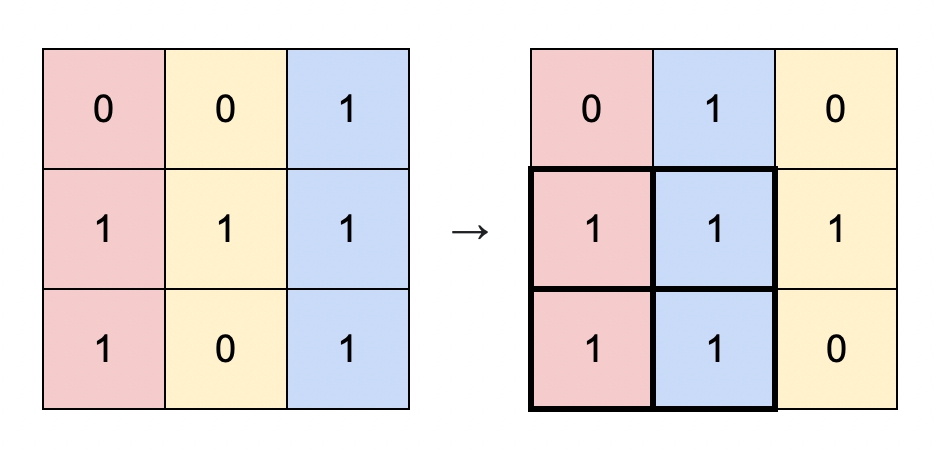Leetcode 1727. Largest Submatrix With Rearrangements
Greedy | Sort
You are given a binary matrix matrix of size m x n, and you are allowed to rearrange the columns of the matrix in any order.
Return the area of the largest submatrix within matrix where every element of the submatrix is 1 after reordering the columns optimally.
Example 1:

Example 2:

Example 3:
Example 4:
Constraints:
m == matrix.lengthn == matrix[i].length1 <= m * n <= 105matrix[i][j]is0or1.
Solution:
Transform the matrix, the value in each cell represents how many consecutive 1s below it.
For each row, we can just sort in descending order; then iterate each column to find the maximal area.
PreviousLeetCode 1676. Lowest Common Ancestor of a Binary Tree IVNextLeetCode 1751. Maximum Number of Events That Can Be Attended II
Last updated
Was this helpful?